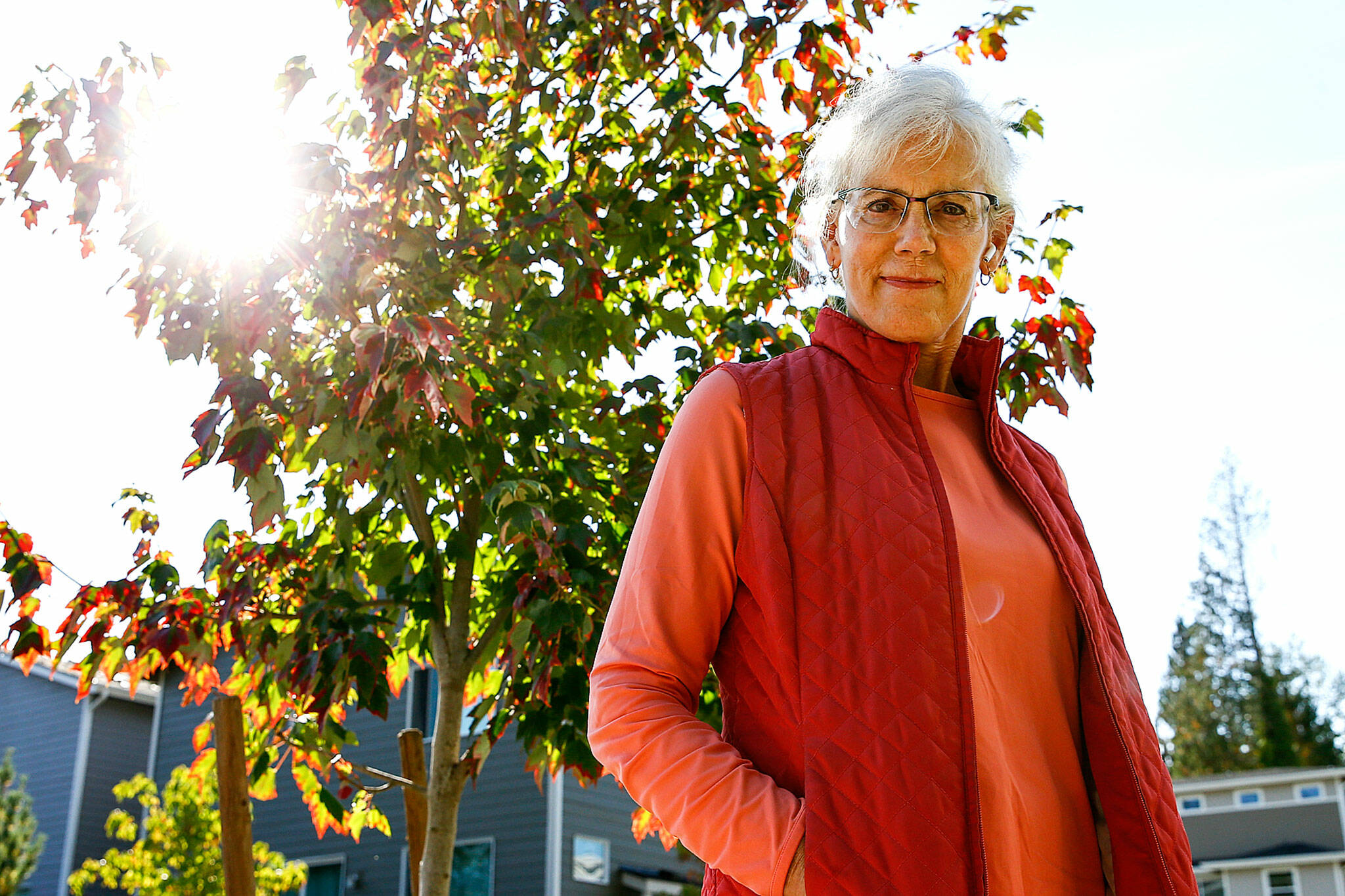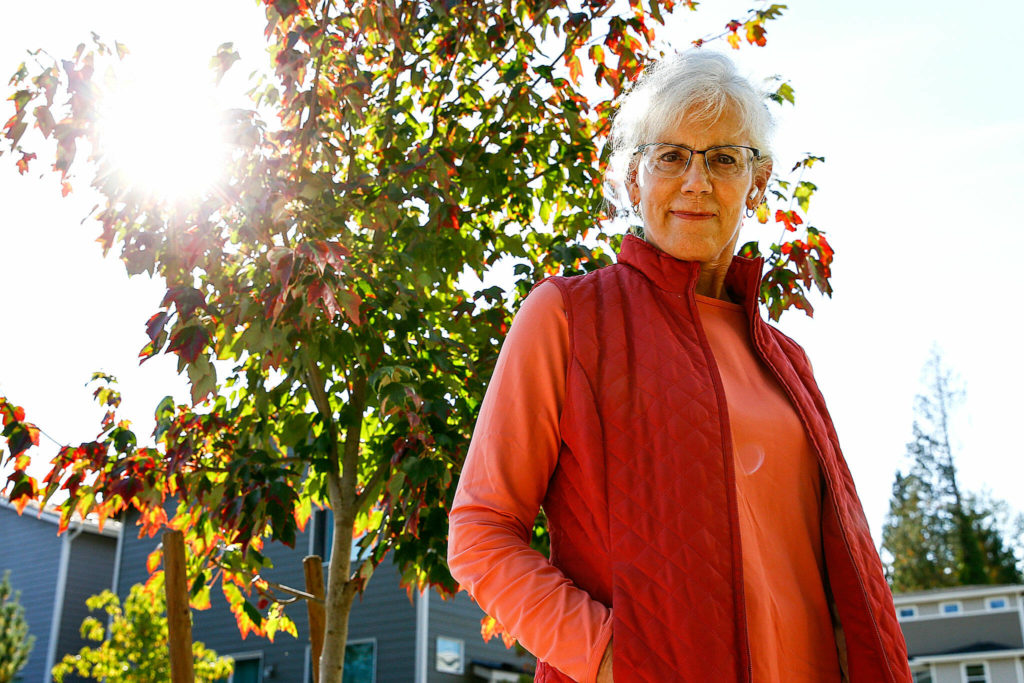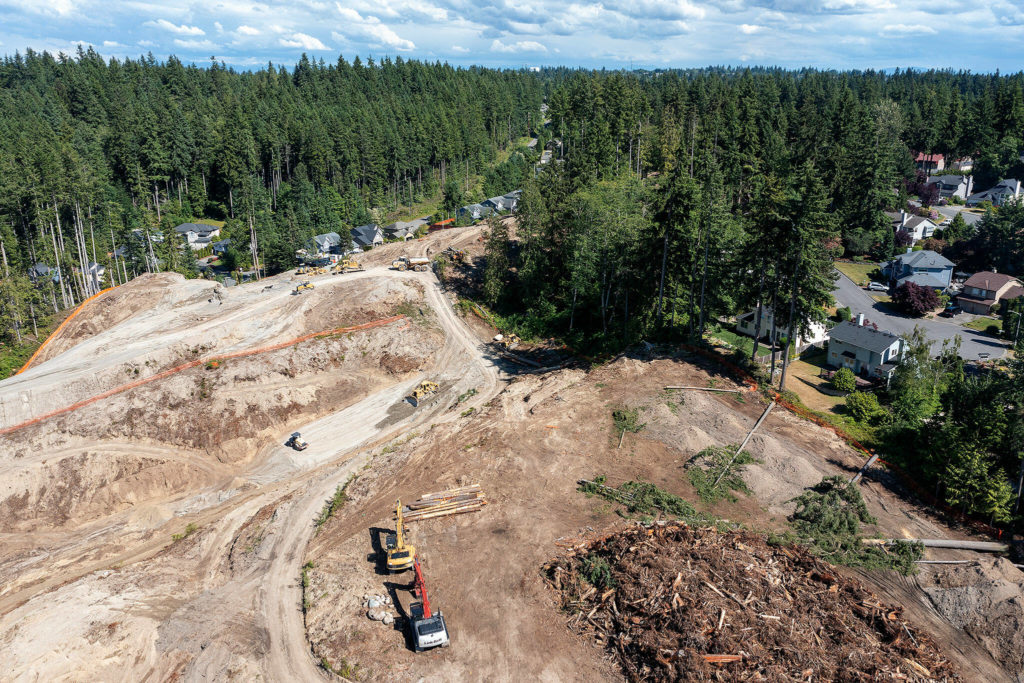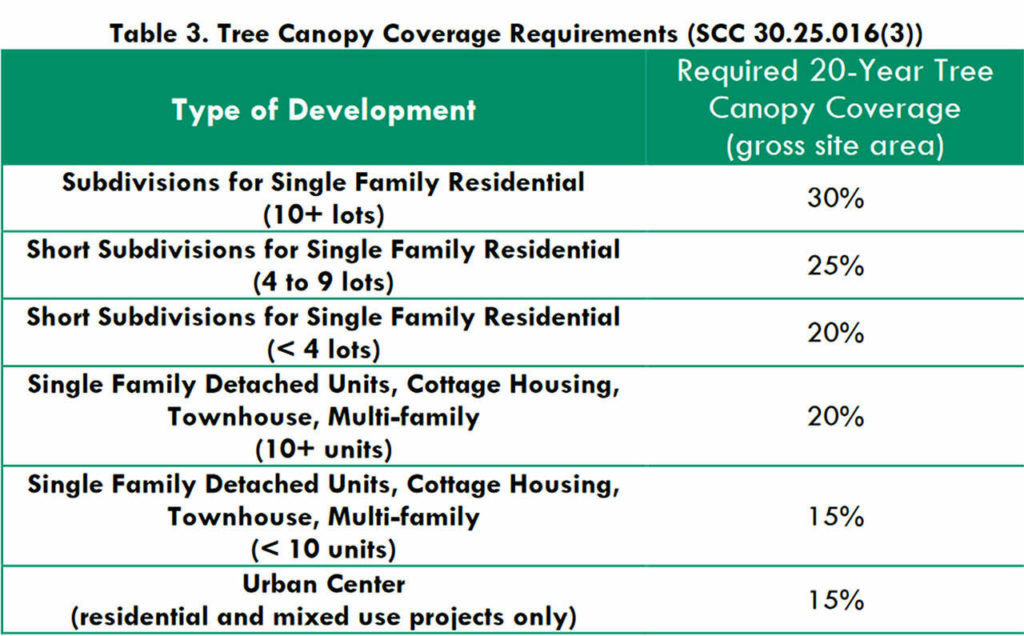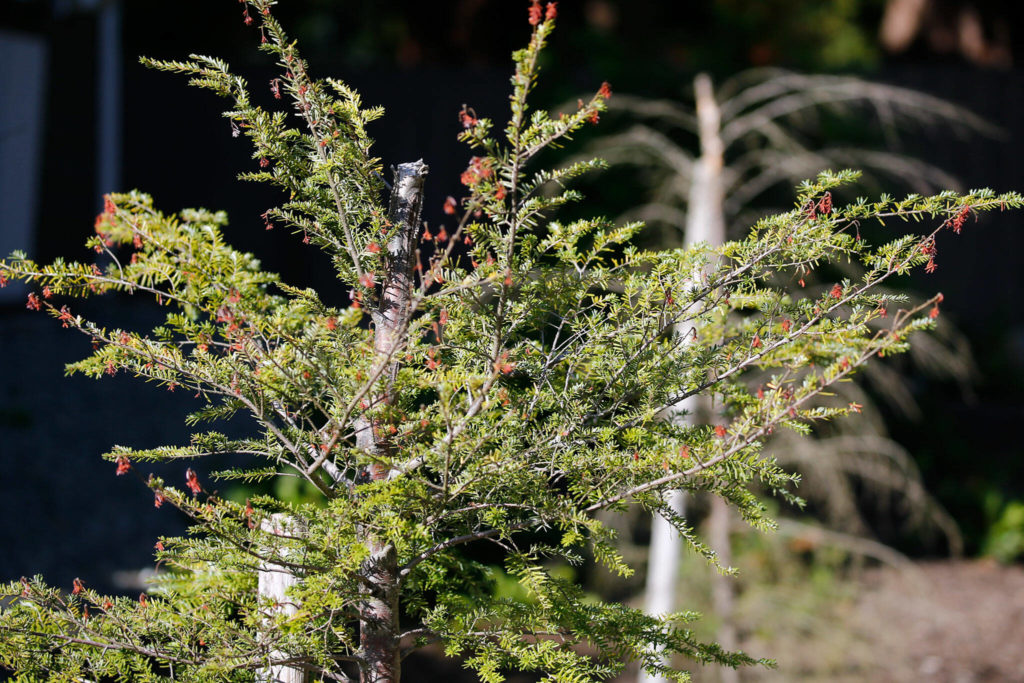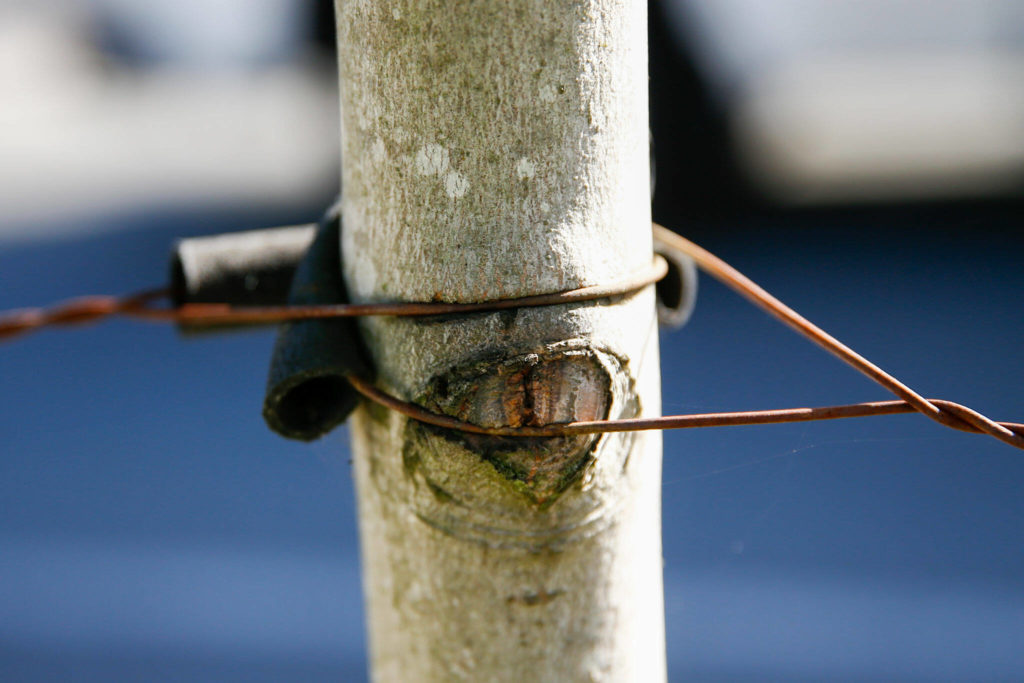This is the second of three Daily Herald stories looking at how climate change threatens our urban trees and highlights their value in helping us cope with it.
EVERETT — Looking for a way to combat climate change, the League of Women Voters of Snohomish County decided to protect urban trees.
As she assessed Snohomish County’s tree permitting process, Kate Lunceford found herself looking ruefully at a row of evergreens that had been chopped off at 4 feet, a developer’s plans showing sidewalk-shading lindens that were never planted, and a dozen Western red cedars that were planted 12 feet apart even though each tree’s canopy is destined to spread out 25 feet.
She concluded the county’s tree code was insufficient and unenforced.
“It was kind of laughable,” Lunceford said.
Lunceford spearheads the nonprofit group’s tree campaign. Members chose the subject because trees pull planet-warming carbon dioxide from the air and store it. They also reduce the impacts of extreme weather by providing shade, releasing cooling vapor and slowing stormwater runoff.
The campaign’s goals are to support policies designed to protect tree canopy, boost public awareness of its value, and find partners to take up the cause.
The League took a big policy step when members convinced Snohomish County Councilmember Megan Dunn to sponsor the addition of an updated tree policy to the 2024 Comprehensive Plan.
It wasn’t a tough sell.
“They had me at ‘Hello,’” Dunn said.
She proposed an amendment to the comprehensive plan’s natural resources section.
The biggest improvement to county policy, Dunn believes, would be a new emphasis on tree protection as a way of coping with the climate crisis. The update also would represent “a mindset change — to start to consider our tree canopy from a holistic and comprehensive standpoint.”
Often, council members hear about trees when residents are upset about a planned development. As an example, Dunn mentioned Frognal Estates, for which land has been cleared south of Mukilteo.
“Frognal was a controversial project that got a stay, then was appealed. It was something that raised awareness about the lack of protection for trees and quality of life,” she said.
The County Council must decide by Feb. 22 whether they will include the amendment in the draft 2024 plan. Next comes environmental review and the chance for public comment. The process can be followed on the Comprehensive Plan Update page, https://bit.ly/SnoCo2024.
Dunn’s amendment began as a document provided by the League of Women Voters and was modified with input from the county’s Planning and Development Services Department. Modeled after the 2008 Evergreen Community Act, its stated purposes include replacing “the policies and regulations that are not adequately protecting our urban trees and our environment.”
The amendment calls for the creation of a county urban forestry plan, and aims to protect trees on county-owned lands and along transportation corridors. But its potential for new regulations on land development is likely to get the most scrutiny. An estimated 95.5% of population growth in the next 20 years is expected to be within the county’s unincorporated urban growth areas. There is built-in tension between providing enough housing and protecting landscapes.
County tree permits are like construction permits. They must be acquired before a development is approved. Snohomish County didn’t require them until 2009. Initially, permitting rules focused on retaining trees that were on-site or preserving nearby trees to make up for any losses.
Builders found the rules burdensome. Among other complaints to the county, they argued that tree inventories cost too much. And that developers were avoiding heavily forested sites because it was too hard to comply with the rules. Planning department staffers became concerned the permit process would keep the county from reaching its goal of increasing housing in urban growth areas to protect rural and resource lands from development.
So, in 2014, the county changed the rules. Now, developers must present plans that show a certain percentage of tree canopy will be present 20 years after construction. For example, developments with 10 or more lots will eventually need 30% tree cover.
“We’re big believers in the approach Snohomish County has taken,” said Mike Pattison, government affairs manager for the Master Builders Association of King and Snohomish Counties. “There is administrative authority over tree planning. There is oversight. It’s not done willy-nilly.”
Plus, he said, builders are required to take out bonds assuring the trees’ survival. “We’re on the hook financially.”
To see if the permit system is working, the League of Women Voters reviewed the 10 biggest developments approved in 2017. An arborist went along on three of the visits. Lunceford wrote a report documenting that trees weren’t given enough space, weren’t planted properly or weren’t species that would live beyond 20 years, defeating the 30% canopy goal. In only one instance, she said, was a problem so bad that the county took action.
She thinks planning department officials have good intentions when it comes to site plan review and oversight, “but nobody’s got the staff.”
Michael Dobesh, permitting division manager, said the permitting planning group usually consists of 10 people. He doesn’t think it would help to have more staff. David Killingstad, manager of long-range planning, noted that permit enforcement is driven not by inspections, but by complaints.
A property owner who removes a tree probably knows nothing about the agreement to protect it. The American National Standards Committee for Tree Care recommends that a maintenance plan be handed off from builder to owner. “That rarely happens,” said committee member Tom Smiley, a Washington arboricultural researcher.
Consulting arborist Scott Baker would like to see local governments send every home buyer a letter saying, “Congratulations on your new home. Here is what your builder agreed to do.” Then again, he wonders if tree protection should even be “dumped on” owners. Maybe the urban forest should be considered a utility and managed for the common good, said Baker, co-founder of Seattle-based Tree Solutions.
That approach would likely collide head-on with the perspective of property rights activists.
Lunceford is keenly aware of such differing opinions. Everybody loves trees, she said, but nobody wants to be told what to do with them.
Julie Titone is an Everett writer who can be reached at julietitone@icloud.com. Her stories are supported by the Herald’s Environmental and Climate Reporting Fund. To contribute, go to HeraldNet.com/climatedonate.
About this series
This three-part Daily Herald series looks at how climate change threatens our urban trees and highlights their value in helping us cope with it.
Part 1: Two of the Pacific Northwest’s most iconic trees, the Western red cedar and hemlock, are most stressed by new extremes in heat and rainfall. As regional conditions rapidly evolve, experts are changing their advice about what to plant.
This story: A local campaign to protect urban trees finds permitting regulations for developers sorely lacking. Its efforts may result in a more tree- and climate-friendly Snohomish County Comprehensive Plan.
Part 3: What’s a forest garden? A great way to grow edibles during a time of climate change, says a conservation planner. A Bothell man incorporates the idea into his all-out effort to turn a yard into a climate-friendly food system.
Environmental Reporting Fund
If you’d like to see more stories like this, donate to The Daily Herald’s Environmental and Climate Change Reporting Fund in partnership with Journalism Funding Partners. Go to heraldnet.com/climatedonate.
> Give us your news tips. > Send us a letter to the editor. > More Herald contact information.Talk to us
Gallery
